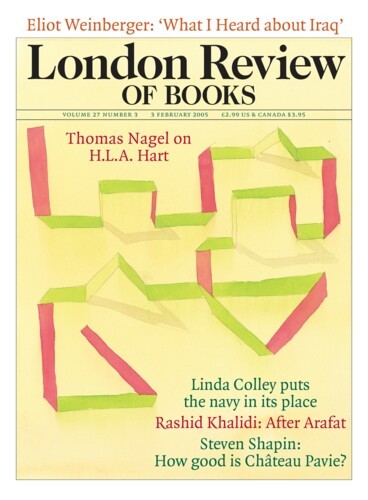There is in the Louvre a diorite stela from the 18th century BC, on which are inscribed the 282 laws of the Code of Hammurabi: pretty much the earliest recorded set of laws we have (centuries older than Exodus, it includes the principle of ‘an eye for an eye’) – at a stretch, it might almost be called the world’s first written constitution. There’s a picture of it in the British Museum, near the Stela of Nabonidus. Made of basalt, 58 cm high by 46 cm wide, and dating from the sixth century BC, this has carved on it in bas-relief a figure wearing the traditional dress of a Babylonian king, who is thought to be Nabonidus, the last ruler of Babylon before it was conquered by Cyrus the Great of Persia in 539 BC. Very crudely speaking, these two artefacts bookend the period of (uneven) Babylonian supremacy in Mesopotamia.
J.E. Curtis, the keeper of the Department of the Ancient Near East at the British Museum, is the author of a recent report on the damage caused to the remains of the city of Babylon by Coalition forces that have been camping on the site since April 2003. The report, unlike the military camp, is a model of care, caution and restraint. Curtis patiently describes the dimensions and location of every Coalition-dug cutting and trench he saw on his visit to Babylon in December, distinguishing between what he was able to verify for himself and what he learned second-hand: from Iraqi archaeologists, and from a comprehensive five-hundred-page condition report by archaeologists ‘attached’ to the Polish forces that have occupied the site since US troops handed over to them in September 2003.
Sand bags have been filled with deposits ‘containing shards, bones etc’. Gravel has been brought in from elsewhere to make car parks and helicopter landing pads, contaminating the archaeological record. Fuel has leaked into the ground. Nine of the moulded dragons on the foundations of the Ishtar Gate have been damaged. The brick pavement of the Processional Way has been broken by heavy vehicles driving over it, and further damage to objects still under the ground is likely. ‘The movement of heavy vehicles on the surface is generally regarded as very bad practice on an archaeological site,’ Curtis notes.
Maybe it takes an expert to know this kind of thing: it’s fairly easy for someone with no idea what to look for (me, for example) to visit a site of archaeological significance and fail to notice that there’s anything special about it. The people trampling over Babylon, ignorantly stamping out the fragile remains of a centuries-old civilisation, were soldiers, not archaeologists. But that being the case, why were they there at all? The only possible justification for their presence was to protect the site from looting and other damage in the chaos following the invasion, but as in almost every other aspect of this woefully misconceived adventure, the Coalition has ended up doing far more harm than good. The smothering of Babylon is symptomatic of the thoughtlessness – and the disregard for history, ancient and modern – that has characterised this war since its first devising.
In the sixth century BC, the Babylonian New Year would be marked by an extravagant pageant along the Processional Way and through the Ishtar Gate, an 11-day ceremony which, it was hoped, would guarantee for another year the favour of the gods, grateful for all the attention lavished on them. Nabonidus was away from Babylon for most of his reign, leaving the city in the hands of his son Belshazzar, he of the feast and the writing on the wall (in a modern materialisation of the myth, an American soldier has carved the word TEXAS into one of the bricks in a Babylonian wall hubristically rebuilt by Saddam Hussein, no exemplar of archaeological best practice himself). In Nabonidus’ absence, the New Year wasn’t celebrated. You wouldn’t catch George Bush making that kind of mistake. Babylon may have been destroyed, but the traditions of its kings live on: witness the multimillion-dollar maximum-security inauguration extravaganza in Washington on 20 January – or, for that matter, the annual state opening of Parliament.
Send Letters To:
The Editor
London Review of Books,
28 Little Russell Street
London, WC1A 2HN
letters@lrb.co.uk
Please include name, address, and a telephone number.

